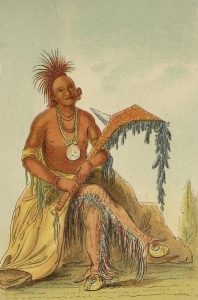Wabashaw or the Leaf
Wabashaw, (or The Leaf,) is the name of one of the Dahcotah Chiefs. His village is on the Mississippi river, 1,800 miles from its mouth. The teepees are pitched quite near the shore, and the many bluffs that rise behind them seem to be their perpetual guards. The present chief is about thirty-five years old as yet he has done not much to give him a reputation above the Dahcotahs about him. But his father was a man whose life and character were such as to influence his people to a great degree. Wabashaw the elder, (for the son inherits … Read more




